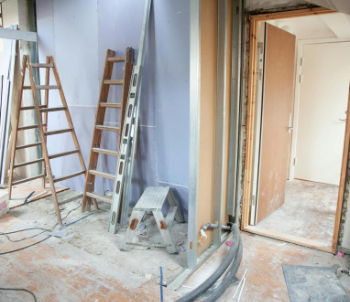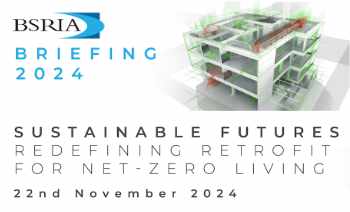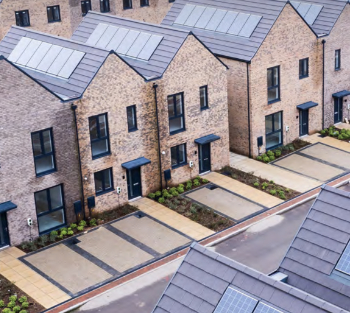Heat networks
The Energy White Paper, Powering our Net Zero Future (CP 337), published in December 2020 by HM Government, states: ‘A heat network, sometimes called district heating, is a system of insulated pipes that takes heat or cooling generated from a central source and distributes it to a number of domestic and non-domestic buildings.’
On 29 June 2016, the Department of Energy & Climate Change (DECC) announced a consultation on how to deploy the £320 million allocated in the Spending Review to the Heat Networks Investment Project (HNIP) for investment into heat networks over the next five years.
Heating is the largest single user of energy and emitter of greenhouse gases in the UK. It accounts for around 45% of energy use: predominantly for space heating in homes and offices, heating water, cooking and industrial processes. Heat production accounts for around 30% of UK carbon emissions.
Heat networks have the potential to reduce heating costs by more than 30% for some households to reduce carbon emissions.
Heat can be taken from a range of sources including large heat pumps, combined heat and power plants and deep geothermal plants, as well as heat currently pumped into the air by waste incinerator plants, factories and offices, which can be captured by a network of pipes and pumped to homes and businesses nearby to provide warmth.
Dubbed ‘central heating for cities’, heat networks already exist in the UK in city centres such as Sheffield, Nottingham, Birmingham, Southampton and in a number of housing developments, such as the Olympic Village. However, there are far fewer networks than other European countries. There are extensive networks in France, Germany, and Scandinavian countries which deliver 'cheap' and lower-carbon heat to thousands of buildings from multiple and varied sources of heat. 90% of homes in Copenhagen are on a network.
The government aims to launch the first funding round through the Heat Networks Investment Project in 2012, followed by a series of funding rounds through to early 2021.
The Rt Hon Amber Rudd MP, Secretary of State for Energy and Climate Change said: “This is an important next step in developing more home-grown energy, which is a vital part of our plan to ensure long-term energy security and affordable energy for our families and businesses. The funding we’re consulting on today will enable these schemes to provide affordable low carbon energy to thousands of homes and businesses across Britain’s towns and cities.”
The government is consulting with current and potential heat network sponsors, investors, suppliers, and any other stakeholders, seeking views about how best to use the capital support funding to overcome barriers to investment in heat networks and increase heat network deployment rates.
They are inviting views on a range of scheme design issues, including the organisations and types of schemes that should be eligible for investment support, what form this funding should take, and the criteria that should be used to assess applications for funding.
The consultation closed on 3 August 2016.
On 17 October 2016, the Department for Business, Energy & Industrial Strategy announced that the £320m scheme would run over five years and further instalments of funding would be released in due course. The initial part of the funding, worth up to £39m, will be open to local authorities and public sector bodies. In future years this will be opened up to a wider set of applicants. Ref gov.uk New 'central heating for cities' to help reduce energy bills.
In December 2021, the government announced a £19 million investment towards setting up 5 new heat networks, 2 in Bristol, and 3 in Liverpool, London and Worthing, providing households and workplaces with more a low-carbon alternative to installing individual gas boilers. Ref https://www.gov.uk/government/news/uk-government-announces-major-expansion-of-heat-networks-in-latest-step-to-power-homes-with-green-energy
[edit] Related articles on Designing Buildings
- A technical guide to district heating (FB 72).
- BSRIA guide to heat interface units.
- Combined heat and power.
- Community energy network.
- Community heating.
- District energy networks.
- Geothermal energy.
- Heat interface units.
- Heat meter.
- Heat Networks (Scotland) Bill.
- Heat sharing network.
- National heat map.
- Renewable energy.
- Site-wide heat network.
- Smoothing the path to net zero.
- Water source heat map.
Featured articles and news
Considerate Constructors Scheme acquires Building A Safer Future
Acquisition defines a new era for safety in construction.
AT Awards evening 2024; the winners and finalists
Recognising professionals with outstanding achievements.
Reactions to the Autumn Budget announcement
And key elements of the quoted budget to rebuild Britain.
Chancellor of the Exchequer delivers Budget
Repairing, fixing, rebuilding, protecting and strengthening.
Expectation management in building design
Interest, management, occupant satisfaction and the performance gap.
Connecting conservation research and practice with IHBC
State of the art heritage research & practice and guidance.
Innovative Silica Safety Toolkit
Receives funding boost in memory of construction visionary.
Gentle density and the current context of planning changes
How should designers deliver it now as it appears in NPPF.
Sustainable Futures. Redefining Retrofit for Net Zero Living
More speakers confirmed for BSRIA Briefing 2024.
Making the most of urban land: Brownfield Passports
Policy paper in brief with industry responses welcomed.
The boundaries and networks of the Magonsæte.
London Build Fire and Security Expo
20-21 Nov and now with new Ambassador Programme..
The Scottish Building Safety Levy
Eight weeks of consultation closing on 18 November.
The grey, the brown and the golden rules of housing
shifting policies from the wild west of housing development.
Future proofing homes that are fit for purpose
Specification challenges and the role of plastic.
Thousands of new homes unlocked for brownfield sites
£68 million to 54 councils for neglected land into new homes.























